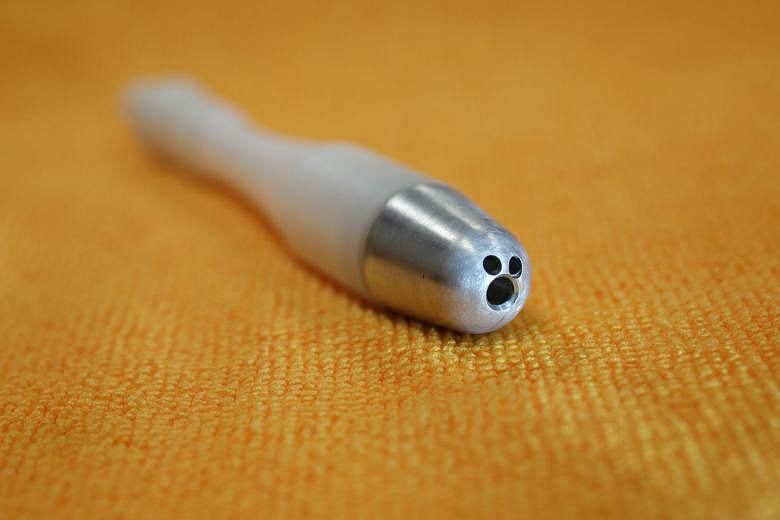SINGAPORE - Diagnosing glaucoma can be faster and made more comfortable for patients, thanks to researchers from Nanyang Technological University (NTU).
Glaucoma is associated with pressure building up in the eye. If left untreated, damage to the optic nerve can lead to loss of vision and even blindness.
The NTU researchers, working with clinicians from the Singapore Eye Research Institute (Seri), came up with a pen-sized camera, which they unveiled on Thursday (April 5).
Called the "GonioPEN", it takes images of the eye's drainage canal. The images are then further analysed to help eye specialists with their diagnosis.
There are currently several tests for glaucoma. The most widespread practice involves pressing a glass scope, known as a gonioscope, against the eyeball. The specialist then peers through a microscope paired with the lens to make a visual diagnosis.
But this method, which is akin to using a pair of contact lenses, can cause discomfort to the patient. It is also time-consuming, often taking up to 15 minutes.
As a result, said Assistant Professor Baskaran Mani from Seri, about half of all patients who are 40 years old and above choose not to undergo a gonioscopy, despite being at risk of having glaucoma.
He said 3 per cent to 4 per cent - or between 65,000 and 80,000 - of Singaporeans above 40 years old are affected by glaucoma, but it is estimated that up to 70 per cent of this number remain undiagnosed.
The head of the research team, Associate Professor Murukeshan Matham from NTU, hopes the new technology can allow for early detection and treatment of the disease, by integrating it into routine eye checks.
He pointed out that the GonioPEN does not require direct contact with the eye and can capture high-resolution images, which can then be stored and reviewed by other specialists, when needed.
While he acknowledged there are other camera devices on the market, these are bulky and often expensive, costing from $33,000 to $158,000, and used solely in research institutions. Gonioscopes, combined with a microscope, can cost up to $16,500.
"The GonioPEN is estimated to cost $5,000...and can cost significantly cheaper with bulk production," he noted. "While only specialists are currently able to conduct gonioscopies, with the new technology, technicians can perform it with minimal training."
Prof Mani said patients will potentially enjoy significant cost savings as well.
He reckoned that early detection and treatment by laser would help delay progression of the eye disease in 50 per cent of patients, and thus reduce the need for surgery.
The two-year research collaboration between NTU and Seri is looking to conclude clinical tests for the product. Commercial production could take place in the next one to two years.
The project is supported by grants from the National Medical Research Council and the National Research Foundation Singapore.
A pilot study, conducted with 20 glaucoma patients, showed similar diagnoses for gonioscopies done using the traditional method and those done using the GonioPEN.
Mr Loke Yew Choong, 59, a glaucoma patient who took part in the study, expressed satisfaction with the GonioPEN, saying he did not feel any discomfort.
The Singapore National Eye Centre (SNEC) has indicated interest in adopting the new technology.
"The new GonioPEN will be a welcome device for the screening and management of glaucoma (and)... allow for greater efficiency," Associate Professor Tina Wong, head of the glaucoma department and senior consultant at the SNEC, told The Straits Times.

